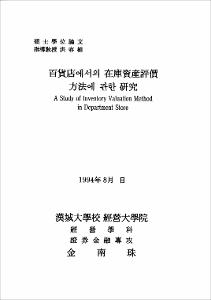百貨店에서의 在庫資産評價方法에 관한 硏究
- Files in This Item:
-
-
Download
 000000066289.pdf
기타 데이터 / 2.68 MB / Adobe PDF
000000066289.pdf
기타 데이터 / 2.68 MB / Adobe PDF
-
Items in Repository are protected by copyright, with all rights reserved, unless otherwise indicated.
 000000066289.pdf
기타 데이터 / 2.68 MB / Adobe PDF
000000066289.pdf
기타 데이터 / 2.68 MB / Adobe PDFItems in Repository are protected by copyright, with all rights reserved, unless otherwise indicated.